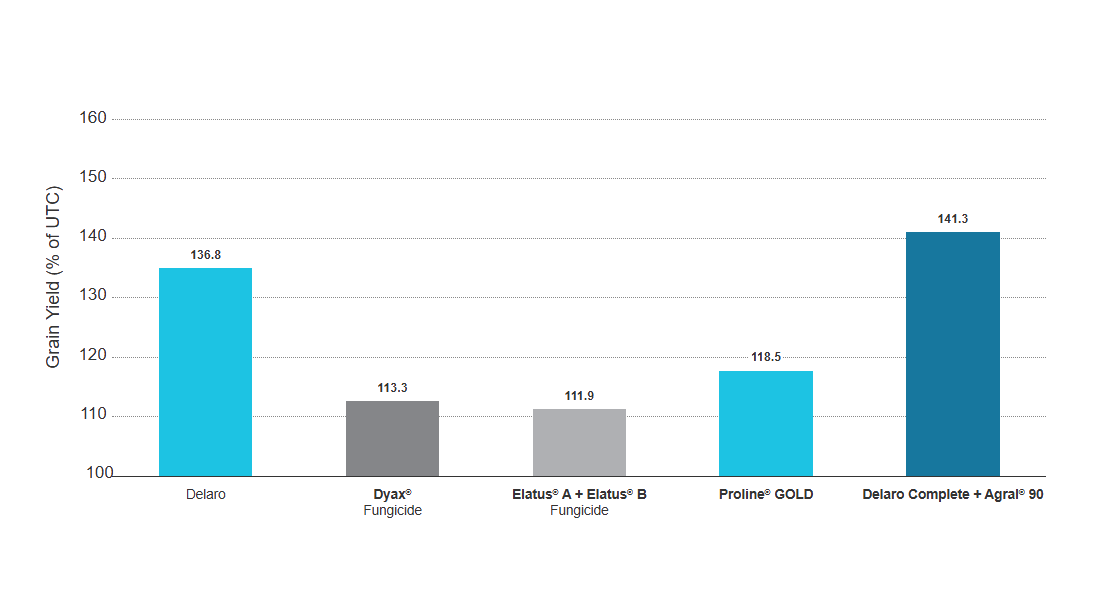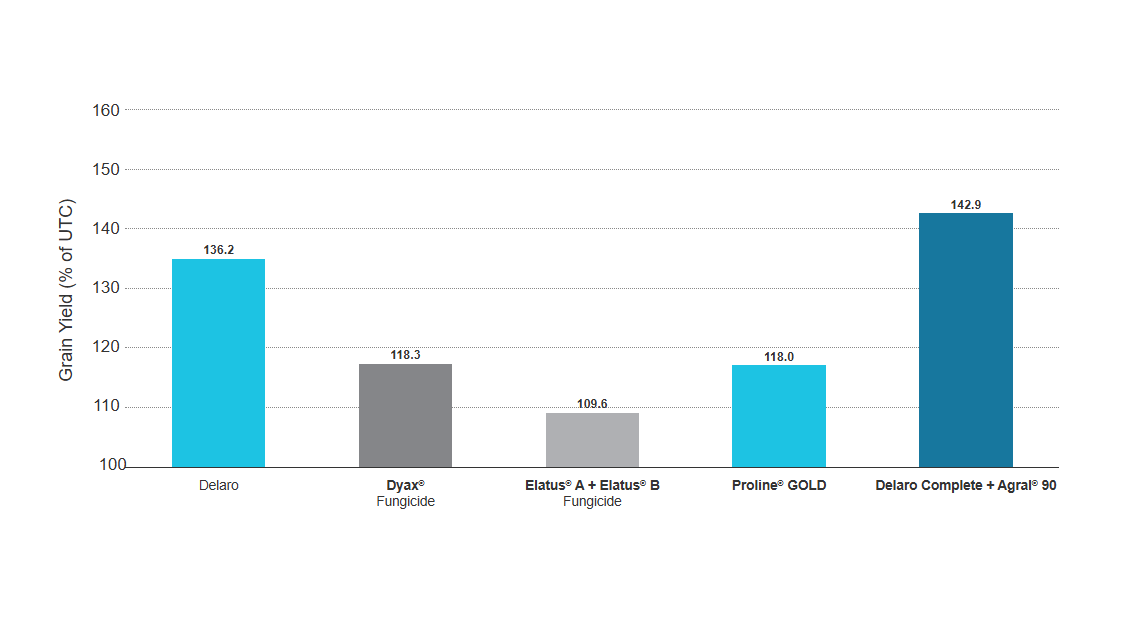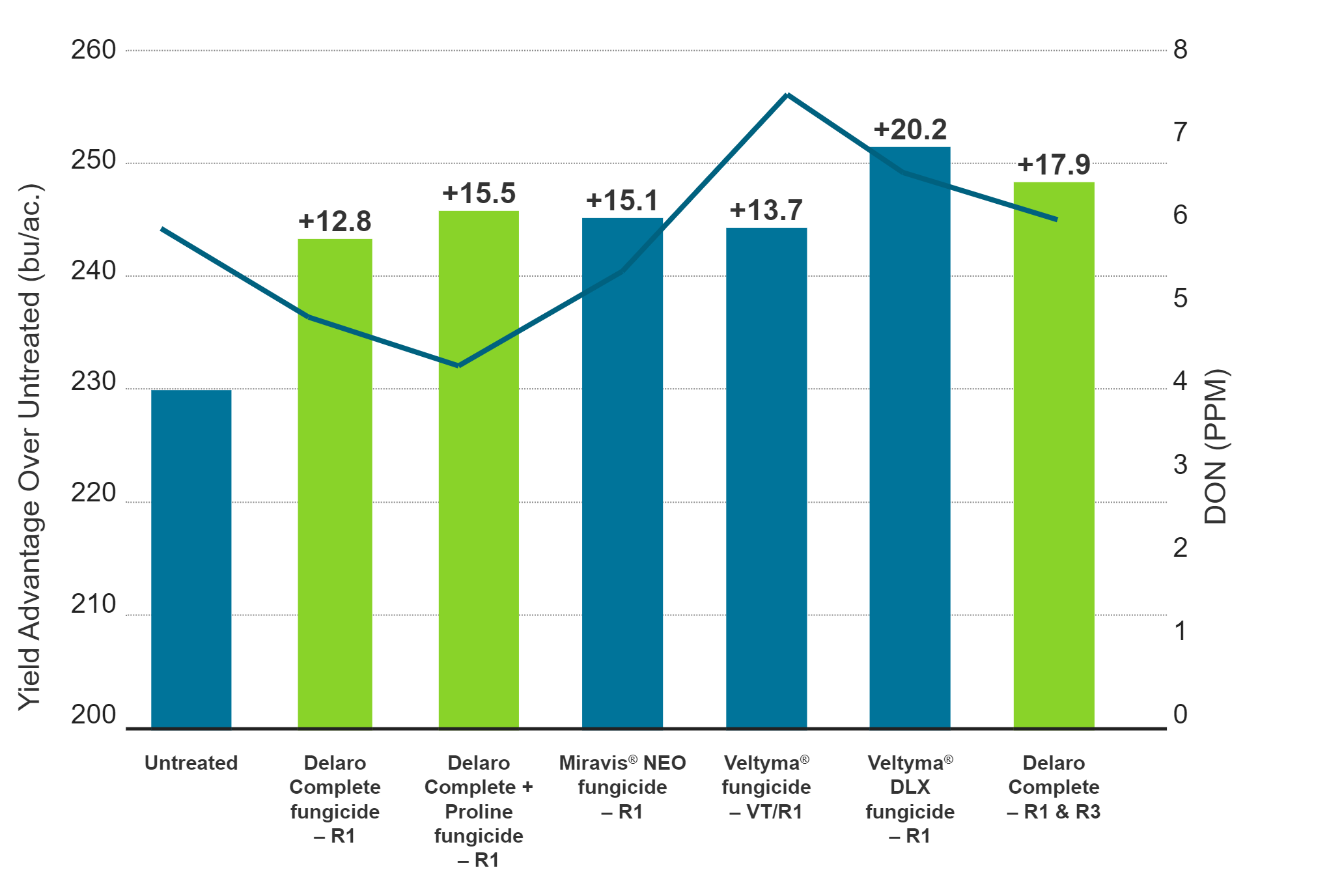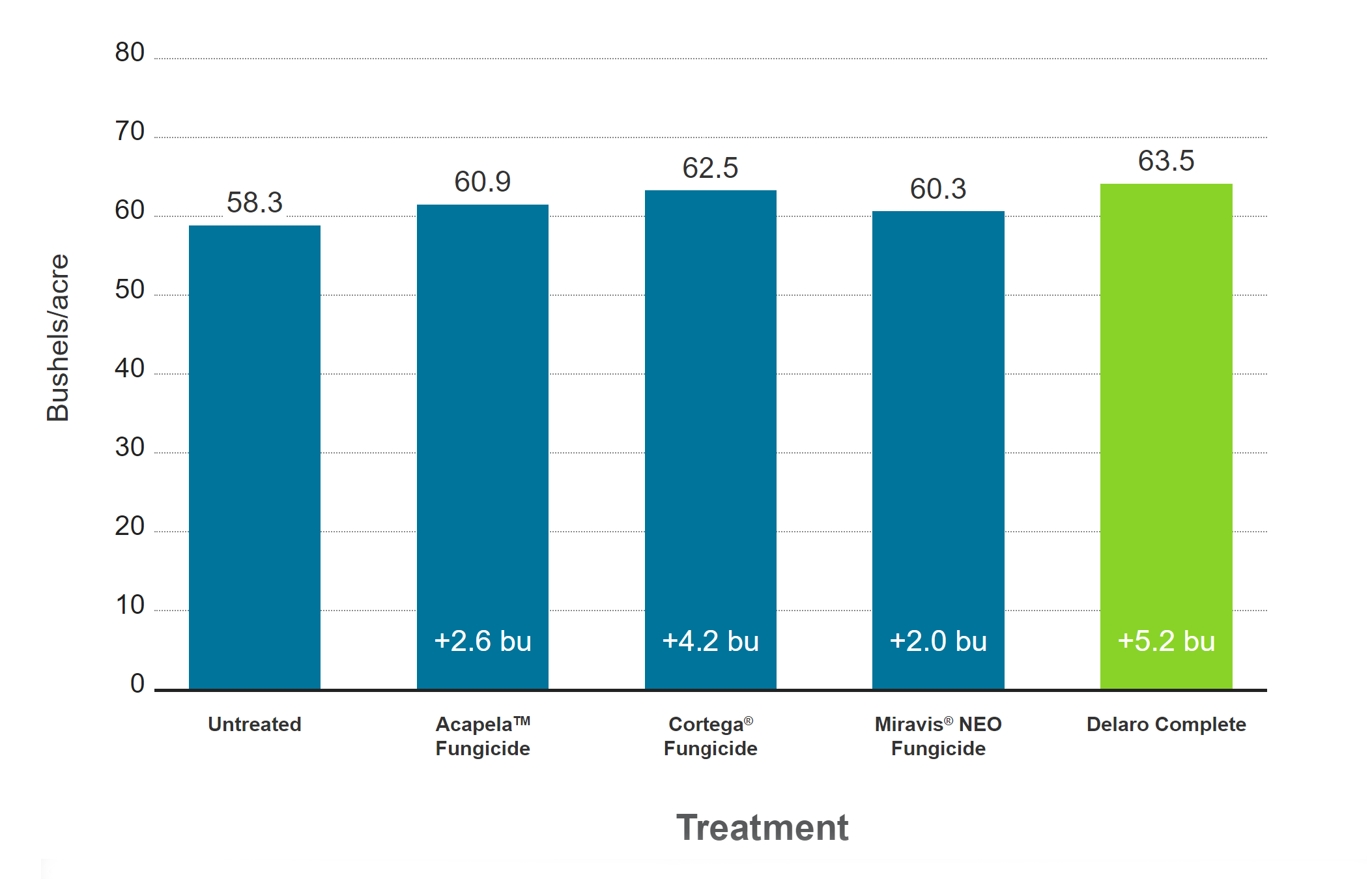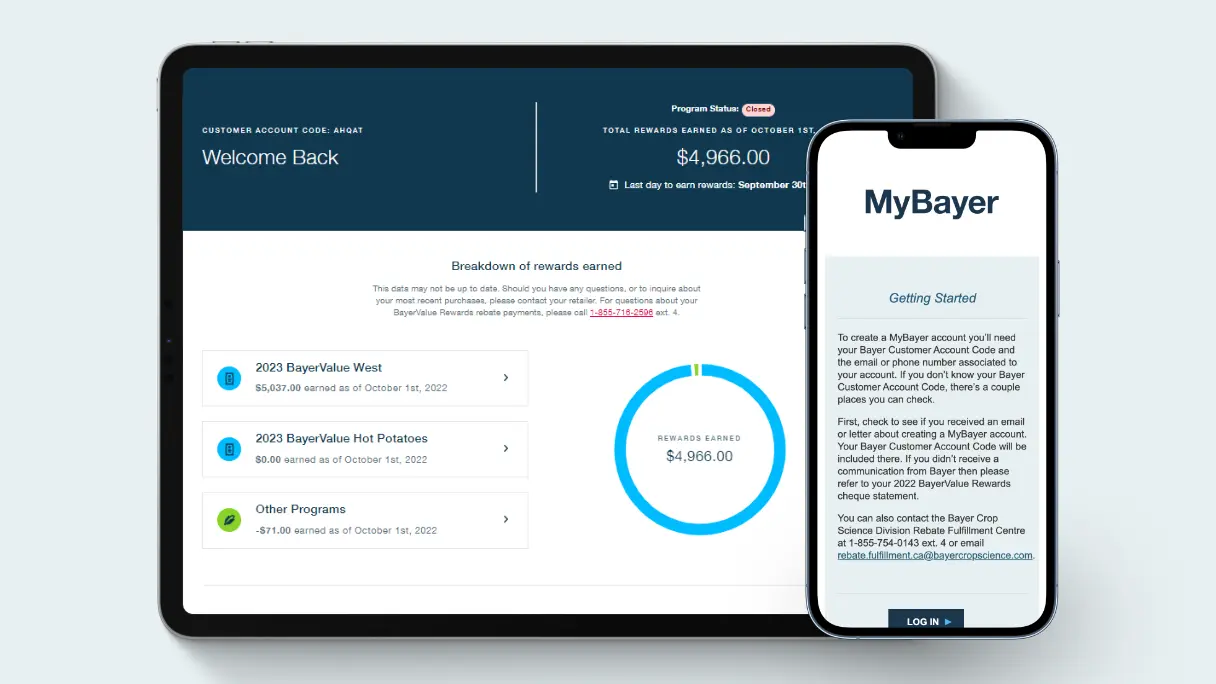Delaro Complete
title-product-highlights
Introduces the Group 7 active, fluopyram, which offers excellent protection in high disease situations
Delaro Complete has three modes of action (Groups 3, 11, 7) that work in tandem for added protection
Effective management of major corn and soybean diseases, including control of tar spot and suppression of white mould
Effective management of major pulse diseases, including control of anthracnose (including biotypes resistant to Group 11 fungicides in lentil and chickpea), ascochyta (including Ascochyta rabiei biotypes resistant to Group 11 fungicides in chickpea), mycosphaerella blight, white and grey mould and powdery mildew.
product-details-heading
| crops | groups-active-ingredients | formulation-type | packaging |
|---|---|---|---|
Wheat (Durum, Spring, Winter) Barley Oats Corn (Field, Popcorn, Seed, Sweet) Pulses | 3 Prothioconazole | Suspension | 7.1 L jug 113.8 L drum 426.6 L bulk tote |
| crops |
|---|
Wheat (Durum, Spring, Winter) Barley Oats Corn (Field, Popcorn, Seed, Sweet) Pulses |
| groups-active-ingredients |
|---|
3 Prothioconazole |
| formulation-type |
|---|
Suspension |
| packaging |
|---|
7.1 L jug 113.8 L drum 426.6 L bulk tote |
| diseases-controlled | diseases-suppressed |
|---|---|
Anthracnose* Ascochyta blight Asian soybean rust Brown spot Chocolate spot | Charcoal rot White mould (Soybean only) |
| diseases-controlled |
|---|
Anthracnose* Ascochyta blight Asian soybean rust Brown spot Chocolate spot |
| diseases-suppressed |
|---|
Charcoal rot White mould (Soybean only) |
Performance Data
title-use-mixing
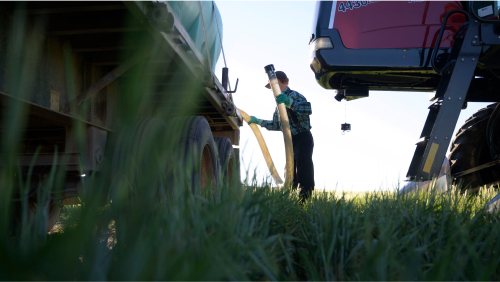
title-additional-guidelines

